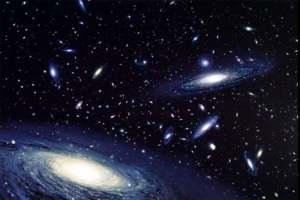Finding Other Worlds
In today’s movies we see advanced alien civilizations all the time. The existence of some other intelligent beings on some faraway planet of a distant galaxy is not as far-fetched as it once seemed. Granted, we still have a long way to go before we’re casually visiting any galactic neighbors, but the simple prospect of life existing on a planet besides ours is completely within the scientific scope of our time. That is why we are searching. We are searching the skies, using a variety of detection methods. And for the most part, what we are attempting to detect is exoplanets. Based on our current understanding of life in the universe, exoplanets, specifically Earth-like planets orbiting Sun-like stars, present the most likely environment in which life would arise separately from our planet. So far, a few thousand exoplanets have been discovered (but many not yet confirmed) using several different methods of detection, some more common than others. The majority of exoplanets right now are discovered using radial velocity and planetary transits, but other methods include gravitational microlensing, which uses the magnification of light due to gravity as a planetary litmus test, and pulsar timing, which picks up changes in the orbit of neutron star pulsars due to the effects of orbiting planets. While all methods of detection are effective, some, like transits, are more reliable, easier, and more valuable as far as the information we can gain. This is why in March 2009, NASA launched the Kepler telescope to find Earth-like planets using planetary transits. The telescope uses a
photometer to monitor the apparent brightness of tens of thousands of stars within a 102 degree section of sky. Periodic dips in a star’s brightness can indicate the presence of an exoplanet. In the diagram above [1], the light curve shows the dip in brightness as the planet passes in front of the star. Variations in this type of light curve can provide information about the mass, speed, size, and orbit of the planet. But there are also other explanations for dips in brightness, such as “sunspots” on the surface of the star or, although less likely, passing asteroids. In order to confirm the existence of an exoplanet, the photometer’s data must show three regular transits in front of the star, indicating that the object is indeed orbiting. For any planet within the habitable zone of a Sun-like star, these three orbits should take no more than 7.5 years, this being the time that it takes Mars (at the outer boundary of our habitable zone) to complete four orbits. This was also the planned duration of Kepler’s mission, although damages to components on the craft now endanger its completion. Up to this point though, Kepler has discovered 134 confirmed exoplanets and over 3000 unconfirmed planets, giving us at least more information than we had before on the nature and number of planetary systems in the Milky Way Galaxy.
A Planet With A History
One of these systems, discovered by the Kepler telescope on December 22, 2011, is a small planetary system in the Cygnus constellation orbiting a subdwarf B star called Kepler 70. Although discovered by the Kepler telescope, the actual method of discovery of the exoplanets Kepler 70b and 70c was the reflection of starlight by the planets, rather than the blocking of it. The planet that is of particular interest, mainly due to its more extreme conditions, is Kepler 70b.
Millions of years ago, Kepler 70 was a main sequence star, but a little before 18.4 million years ago, it went through it’s red giant stage, engulfing the two orbiting gas giants (Kepler 70b and 70c). The diagram below[2] shows how a red giant might pull its satellites into closer orbits before moving to the subdwarf stage.

Figure 2- This shows planetary engulfment during the red giant stage leading to a subdwarf star. This is what is speculated to have occurred in the Kepler 70 system. Credit: Kempton
It is unclear how these planets actually survived being dragged into the red giant envelope of their star and whether their disruption altered the evolution of their host star, but there they remain, as two hot planetary cores, closely orbiting their host star, stripped of any atmosphere they might have once had. The host star, Kepler 70, is currently a subdwarf, meaning that it is a post-red giant fusing helium that will contract to a white dwarf once fusion ceases after about 100 million years. The majority of the time, subdwarf stars are part of a binary star system in which one of the stars somehow strips off the outer layers, leaving only a thin layer of hydrogen and mostly helium. That is the theory anyway. In the case of Kepler 70, the same appears to have happened, but with orbiting planets, rather than another star. This branch off of the typical Hertzprung-Russell diagram can be seen below[3] as the dark blue band on the left of the diagram. Like white dwarves, the subdwarf Kepler 70 is incredibly hot, with a surface temperature of 27, 730 K (almost five times hotter than our Sun), but it is also still very luminous, with a luminosity of 18.9 solar lumens, likely due to the fact that it is still undergoing fusion. This intensely hot and luminous star, coupled with Kepler 70b’s 0.006 AU 5.7 hour orbit, makes the planet an unlikely candidate for life, to say the least, despite its “coolness factor”.

Figure 3- The extended Hertzprung- Russell diagram of star types, which plots the temperature of stars (K) against the mass and luminosity. Kepler 70 would fall under the dark blue band on the left of the diagram representing subdwarf stars. Credit: Heber (2009, ARAA, 47, 211)
Not Exactly A Hotbed For Life
When looking at the statistics for Kepler 70b, it does not take much to figure out that it is certainly not a habitable planet. The first indicator should be that it is much too close to its host star to be anywhere near the habitable zone. The habitable zone for Kepler 70 can be roughly estimated using eq. {1}, where our Sun’s habitable zone is used for Router and Rinner, the inner and outer radial boundaries of our habitable zone (.95 AU and 1.4 AU respectively) and L is the luminosity (L/L¤) of Kepler 70:
R_hz=R_inner(sq root(L))- R_outer(sq root(L))
In order to do this though, first the luminosity of Kepler 70 must be calculated using eq. {2}, where σ is the Stefan-Boltzman constant (5.67×10-8Wm-2K4), r is the radius of the star, and T is the temperature of the star.
L=4pi(r)^2(sigma) T^4
When the luminosity is calculated, using the scorching 27,730 K surface temperature of Kepler 70 and the star’s radius of 1.4×108m, it comes out to be 18.9 solar luminosities (L/L¤), or 18.9 times more luminous than our sun. This number can then be used in eq. {1} to calculate the habitable zone of Kepler 70, which comes out to be 4.13-6.08 AU (using the conservative estimate for our Sun; .95-1.4), or 3.65-7.39 AU (using the optimistic estimate; .84-1.7). No matter which estimate is used though, Kepler 70b orbits at a distance of 0.006 AU from its host star, where it receives extreme radiation. It is not even close to being inside the habitable zone. Although the width of the habitable zone for Kepler 70 is about 5 times wider than that of our Sun, it does no good if the planets are not within it.
What being so far inside of the habitable zone means for Kepler 70b, is that it is hot, and not just “planet hot.” Kepler 70b is hotter than the surface of our Sun. Taking the luminosity found in eq. {2}, the equilibrium temperature can be calculated in eq. {3}, where A is the albedo of the planet, D is the distance to the star, Lstar is the luminosity of the star, and Lnow is the luminosity of our Sun in its current state (1 L¤). This equation shows the surface temperature of the planet due solely to stellar radiation, assuming no atmosphere. And since Kepler 70b has no atmosphere, because it was evaporated during Kepler 70’s red giant phase, in which the planet was engulfed, this temperature calculation is relatively true to the actual surface temperature on the planet.
T(eq)=278KxL^1/4x(1-A)^1/4/(sq root(D))
So, using the luminosity of 18.9 L¤ from eq. {2}, the distance of 0.006 AU to the host star, and an estimated albedo of 0.1, the equilibrium temperature comes out to roughly 7300 K, about 2000 K hotter than the surface of the Sun. There is no doubt that liquid water, or any liquid solvent for life, is impossible on Kepler 70b. Therein lies the irony in that Kepler 70b is the coolest exoplanet.
While there are more factors that contribute to the habitability of a planet, the ones already discussed will, for the most part, ensure that no life can exist. As far as our current understanding leads us to believe, if a planet is not within the habitable zone, it is extremely unlikely to harbor life. It will either be too hot or too cold, and will have too much or too little atmosphere. And given the history of Kepler 70b, it seems unlikely to contain life anyway. At one point, during the star’s main sequence life, it could have been possible that Kepler 70b was in a better proximity for life to arise, being a gas giant with an atmosphere. But now it’s really only a burned up planet core hurtling all too close to a dying star. It has no atmosphere, no water, and no prospects for life. Even if life were somehow possible there, through means that we do not have the science to explain or understand, what kind of life form would want to live there?
What If…
This now marks the departure into sci-fi. Clearly, life is not possible on a planet as hot and barren as Kepler 70b. At over 7000 K one would be hard pressed to find any kind of liquid, especially with such low pressure, since the mass of Kepler 70b is only 0.44 Earth masses. The only kind of life that it seems remotely reasonable to expect would be some kind of thermophile bacteria, but something unlike anything we have ever seen. But that would make for a very boring planet…
COME ONE, COME ALL! CALLING ALL HYPERTHERMOPHILES! THIS COULD BE JUST THE LIFE CHANGING VACATION YOU HAVE NEEDED.
I have no idea know how many times in the last month I have heard from desperate inhabitants of Altair and Canopus looking to escape the summer heat of their home stars. And this could just be the perfect solution. I am talking about Kepler 70b; and boasting temperatures as low as 7300 K, it is the perfect summer getaway. Due to its close proximity to its sun, you will feel just like you are at home, but with the exotic ambiance of a semi terrestrial world. If you love the extreme, then come try the orbital experience, traveling at over 950,000 km/h! Come experience the natural plasma hot springs! And with only 5 ½ hour days, beautiful sunsets and sunrises are all the more abundant. Here on Kepler 70b, paradise awaits.
Life Might Not Find A Way…
Back in reality, there is really no chance that life could exist on Kepler 70b. The hallmark of habitability is liquid water. Although we have found organisms on Earth that appear to survive without it, it seems unlikely that life could arise in its absence. The habitable zone around our Sun marks the area in which the equilibrium temperature allows for abundant liquid water, given the right atmospheric conditions, as does the habitable zone around the subdwarf Kepler 70. But that zone is from roughly 4 AU away from the star to 6 AU away. If Kepler 70b were within this range, then, given an appropriate atmosphere, it would be possible to have liquid water and theoretically life. But it is not. So the fact that it has no atmosphere is irrelevant. None of the other parameters for habitability matter if the planet is too hot for a liquid solvent for life. That is why, despite their entertainment factor, planets like this one are not prime targets in the search for life. What we are looking for is Earth-like planets orbiting Sun-like stars, because that is what we know. But that is not to say that there is nothing to be learned from systems like Kepler 70, only that the search for extraterrestrial life is going to have to search elsewhere.
Bibliography:
Barlow, Brad N. “Brad Newton Barlow.” Research. N.p., n.d. Web. 20 Oct. 2013.
Bennett, Jeffrey O., and G. Seth. Shostak. Life in the Universe. 3rd ed. San Francisco: Pearson Addison-Wesley, 2012. Print.
Charpinet, S., G. Fontaine, P. Brassard, E. M. Green, V. Van Grootel, S. K. Randall, R. Silvotti, A. S. Baran, R. H. Ostensen, S. D. Kawaler, and J. H. Telting. “A Compact System of Small Planets around a Former Red-giant Star.”Nature.com. Nature Publishing Group, 21 Dec. 2011. Web. 20 Oct. 2013.
“Exoplanet.eu.” The Extrasolar Planet Encyclopaedia — KOI-55 B. N.p., n.d. Web. 20 Oct. 2013.
“Kepler (spacecraft).” Wikipedia. Wikimedia Foundation, 20 Oct. 2013. Web. 20 Oct. 2013.
“Kepler-70.” Wikipedia. Wikimedia Foundation, 18 Oct. 2013. Web. 20 Oct. 2013.
“Kepler-70b.” Wikipedia. Wikimedia Foundation, 25 Sept. 2013. Web. 20 Oct. 2013.
Images:
[2] http://www.nature.com/nature/journal/v480/n7378/fig_tab/480460a_F1.html










